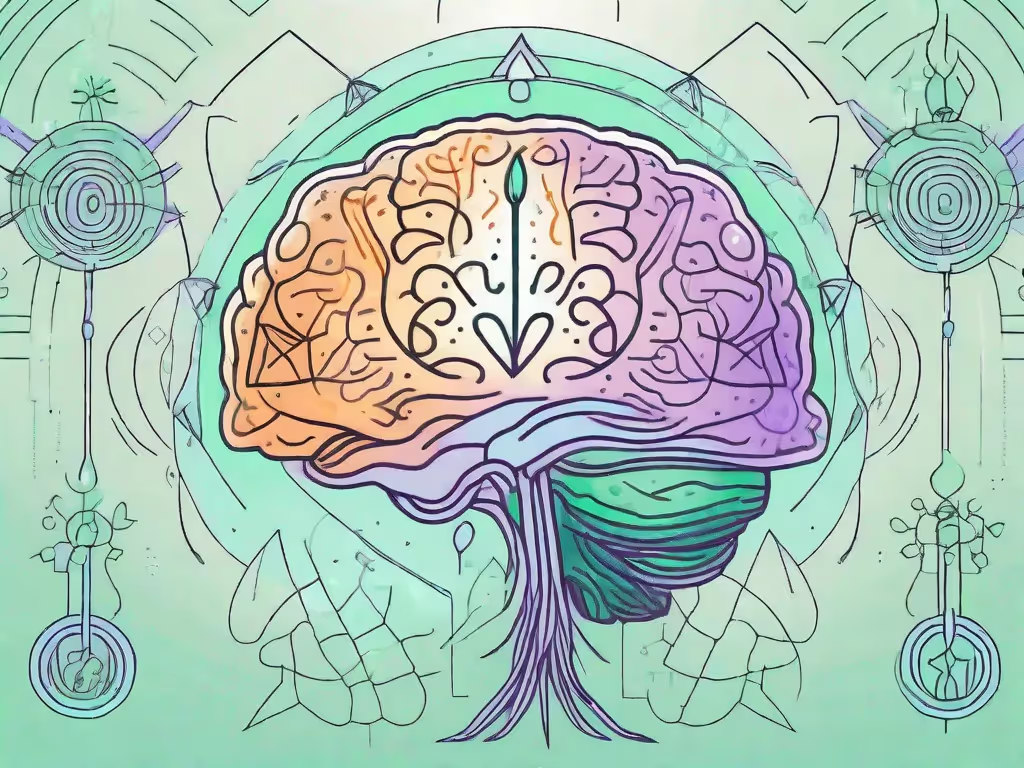Has an inner voice in you head ever offered you a little nudge when you needed it? Has it ever done the opposite and tried to talk you out of trying harder for fear of rejection?
A few years ago, I took a coaching certification training that discussed the concepts of the inner critic and inner mentor. The point was that one of them is the voice that tells you you can't or you are not good enough, and the other says you are more than capable. After reflecting on this, we were all challenged to get in touch with our inner mentor or guide and release more destructive internal dialogue that no longer serves us.
This seems like a simple concept, but when I was first introduced to the inner voice, it was difficult to reframe self talk and focus only on the positive inner dialogue. In part, this was because the inner voice that directs is so automatic and often repetitive. It can sometimes even feel like our internal self talk is on an endless loop and that it, whatever it is, has more control over our emotions and actions than we do as conscious beings.
If all this feels a little "out there," let's back up and look at some basics. In psychology and scientific literature, the inner voice is referred to in different ways. It can be referred to as the inner monologue, verbal thinking, inner speech, or self talk. And the phenomenon of thinking about thought is referred to as metacognition. For the purpose of this article, we'll call it the inner voice.
"Everyone who wills can hear the inner voice. It is within everyone." -Mahatma Gandhi
Does Everyone Have an Inner Monologue?
Some people have no inner voice or visual way of processing information. For those of us with loud inner speech and who can visualize the future (for better or worse), that can be hard to imagine, and those without this processing style find an inner dialogue hard to imagine. The phenomenon in which people cannot visualize thoughts is called aphantasia. This phenomenon occurs in 1-4% of people.
For those with aphantasia, there are still thoughts, but ideas and predictions occur in different ways than imagery. I can also be difficult for such people to remember faces. Whatever our processing is, we are constantly thinking about what is happening in the world. According to How Stuff Works, the inner voice encompasses thoughts, emotions, self-reflection, problem-solving, self-criticism, planning, decision-making, and daydreaming.
Russel Hurlburt, Professor of Psychology at the University of Nevada, Las Vegas studied how people process information by using a beeper that randomly, when sounded, prompted participants to record what they were experiencing, thinking, and feeling. The study found that when it came to monitoring inner speech, there were differences. Some subjects never heard the inner voice; others heard the inner voice in as many as 75% of their samples. The median percentage across subjects was 20%.
One way to think about the difference is that internal dialogue can be thought of as a running commentary we are having about our own lives, and according to Herbert's study, each thought is its own experience. We are always narrating our experiences and perceptions. The problem is that sometimes our inner voice can get stuck on a recurring thought or scenario or play the same program of speech over and over again, such as in the case of addiction or negative self talk.
On the other end of things, auditory hallucinations, referred to as paracusia, is when a person hears sounds that are not there. This is different than the inner voice in that rather than a little voice recounting or projecting thoughts about stimulus, the mental process is one that is hypervisual and auditory. This is a rare occurrence and can be connected with psychosis, but sometimes the inner voice is just that. If you are worried that the inner monologue you hear is too vivid, you can reach out to a psychologist to get a better idea.
"My own inner critic is a bully." -Julia Cameron
So how do we leverage this inner voice to better manage emotions and set ourselves up for greatness when we hear negative words repeating in our minds?
Mindfulness helps us to sit with our thoughts and recognize the inner voice as it is, whether it sounds more like a mentor or a critic. In practicing mindfulness, we begin to realize that there are no good or bad thoughts, only thoughts. Many meditation exercises will have you watch your thoughts as though they are clouds passing by. But we can also allow our inner voice to guide us in positive directions.
The way to leverage mindfulness to explore the inner dialogue is to choose presence over any internal talk that might keep you stuck in the future or past. For instance, you might be about to make a big speech or are awaiting test results that can be life-changing, you might hear internal talk that asks "What if [this]?" and "What if [that]?" Your internal dialogue may even play out fully detailed scenarios. It would be easy to feel like the brain was consumed by an inner dialogue full of speculation, which could cause anxiety or excitement, depending on the scenario.
Can Mindfulness Improve the Inner Dialogue?
Mindfulness is listening to the thoughts or conversation and watching with pure awareness, knowing that there is always a choice in the present. When you observe the dialogue in your head rather than try to control it, you begin to come back from a place of mental narrating and into what is happening here and now.
A wonderful way to get mindful when feeling mental stress is to get back into the sensory body, allowing our cognitive brain to take a break. Rather than imagine what could happen, the mind can focus on what the body is feeling now and who you are with or where you are in the world. It can allow auditory or visual imagery without getting lost in the inner dialogue.
Here are three mindfulness exercises you can try to get back to the present:
Three things: Focus on what is in front of you. No matter where you are, inside or outside, a short practice you can try to settle your inner voice and focus on the present is as follows: Look around you and settle your gaze on one thing. As you breath and examine the object, tune into your senses. Focus on it totally, it's shape and color and size, what sound it makes and its texture. Then find another item, maybe even something you can touch, and focus on it completely. Notice the sensations of the item. Find one final thing to focus on now, and for 30 seconds take in that object, thinking about its details. After you complete these exercise, note any shifts in your internal dialogue and overall sensation.
Watch the inner monologue with curiosity: In a sitting mindfulness practice, you can train yourself to hear the inner self talk without judgment or concern, even if the thoughts are negative. As counter-intuitive as it seems, try sitting with the very thoughts you might like to avoid. Watch the inner voice with curiosity and compassion. Hear the internal monologue or internal dialogue almost as though you would if you were watching a play. As you do this, you will begin to identify less with your thoughts. It's a subtle but powerful shift.
Write your thoughts down: Julia Cameron has a book called The Artist's Way that is popular with a lot of my writing clients. It suggests that people clear their minds before embarking on their days by writing three pages of stream of consciousness. The only rule is that the pen or pencil cannot leave the page (it is taught to write by hand). Despite its name, this practice can be done at any time. Begin by opening a journal or computer and beginning to write quickly, trying to capture as much of the inner voice as possible. What are you thinking right now? How does one thought lead to the next? How do these thoughts make you feel? You can even let the inner dialogue or inner monologue run straight from the brain to the page. Let it be loud, and give it its stage. It might take some practice, but this is what is called mindful journaling and it can give you a new perspective on your self talk.
How Do We Know When to Listen to That Little Voice and When to Let Go?
This processing of internal dialogue and/or imagery is always in the background of our daily lives, even if some of us process things differently. Sometimes our inner speech is loud or quiet, sometimes it is positive and other times it can feel crippling, but we can work with our own thoughts and inner dialogue to influence the way we act and the decisions we make in positive ways. Remember to hear without judgment.
If you believe that you are hearing voices in a way that is dangerous or detrimental to your well-being, and this is causing you anxiety, it is important to reach out to a psychologist who can guide you in the right direction. But if you are observing the thoughts you think and the mental visual or auditory images and notice you'd like them to change, there is a way.
Trust that the conversation in your head is often just your mind's way of filtering and categorizing information. Old patterns of thought might emerge, and the more you can see them for what they are, merely thoughts, the more you can move back to a place of present moment and self control.
The language of our minds doesn't always need to be decoded, after all; sometimes, it can just be seen as the inner voice and nothing more. A companion that we can listen to or that can remind us of all that awaits here and now. The self is not that inner voice, good or bad, but the self can leverage that inner voice with practice and bring attention back to what's in front of us -- this beautiful life.
"Listen to the mustn'ts, child. Listen to the don'ts. Listen to the shouldn'ts, the impossibles, the won'ts. Listen to the never haves, then listen close to me... Anything can happen, child. Anything can be." -Shel Silverstein
The more we listen and observe, after all, the more we understand how to direct our minds, rather than allow self talk to be automatic and direct us.
At Aura, 97% of people find more calm in just three days, which speaks to the power of meditation and mindful practices as a form of self-care and emotional well-being. If you’re looking for more guidance, community support, and resources to support anxious thoughts, join me at Aura, the most holistic meditation app on the market, for 30 days free.



.webp)







.avif)

%20(1).avif)


.avif)
.avif)
.webp)


.avif)


















































































































.avif)

















.svg)









